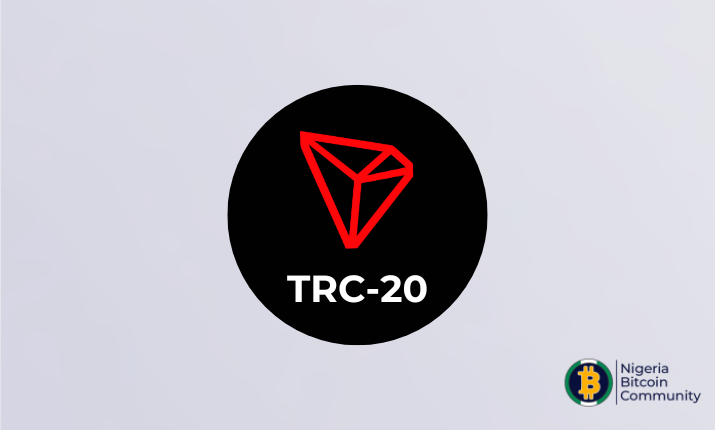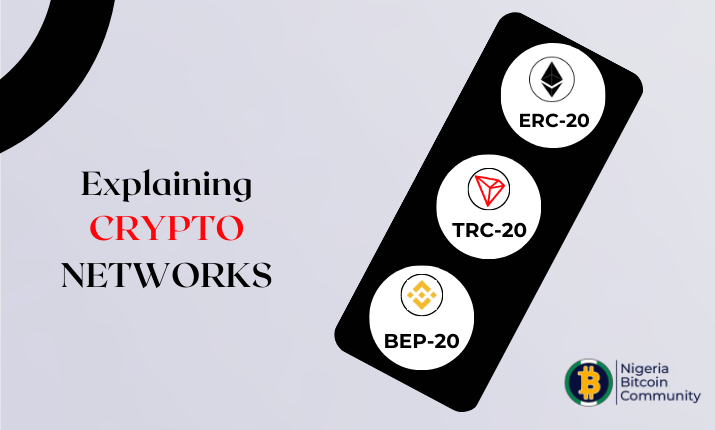A blockchain is a distributed ledger technology that links computer network nodes.
Users on a blockchain-based network can make financial transactions and create apps without relying on any one server or governing body to maintain or process the data.
Information is electronically and digitally preserved on a blockchain.
Blockchain technology underpins decentralized digital currency networks such as Bitcoin and Ethereum, as well as hundreds of useful and profitable applications in sectors as diverse as finance, fashion, and gaming.
Blockchain technology is unique because it eliminates the requirement for a trusted third party while also guaranteeing the integrity and safety of a recorded transaction.
Let’s look at how blockchain works.
How Does A Blockchain Work?
In a blockchain, data is compiled into blocks, which are essentially databases.
When the storage capacity of a block is full, it is “closed” and “chained” to the prior full block, creating what is known as a blockchain.
After a new block has been added to the chain, all subsequent data is gathered into a new block and then added.
Information placed into a decentralized blockchain cannot be changed after it has been recorded. Numerous cryptocurrencies are blockchain-based decentralized networks.
Cryptocurrencies, decentralized finance (DeFi) apps, non-fungible tokens (NFTs), and smart contracts are just a few examples of the growing number of use cases for blockchains today.
What is a Crypto Token Standard?
Ethereum, Binance, and Tron are the three most popular Blockchain. They are widely employed for crypto token creation.
These Blockchains use the ERC-20, BEP-20, and TRC-20 token specifications.
Startups and other organizations, often but not necessarily operating in the blockchain industry, create and utilize tokens as a means of funding their new ventures.
A token standard is a set of rules by which all tokens must abide.
To put it another way, a token standard specifies the steps necessary to develop, distribute, and use new tokens on a certain blockchain.
For instance, ERC20 is a standard for developing tokens on the Ethereum network and allows developers to create tokens for use on that platform.
Every ERC20 token will operate under the same set of rules and have the same features.
Other significant token standards include BEP-2, BEP-20, and TRC-20, in addition to the ERC20 standard.
How Many Various Token Standards Exist?
Each Blockchain network can develop its own token standard.
Ethereum uses three different token standards: ERC-10, ERC-20, and ERC-721.
These are the most prevalent forms of token standards for advanced token development:
- ERC-20 (Ethereum)
- TRC-20 (TRON blockchain)
- BEP-20 (Binance Smart Chain)
1. What is ERC20 Token Standard?

ERC20 is the most widely used and well-known token standard. It is now widely considered to be a gold standard for tokens.
When it comes to token creation, ERC-20 is a tried-and-true standard that has been around for a long time.
ERC stands for Ethereum Request for Comment and is frequently used by tokens created and operated on the Ethereum network.
It implies that all tokens produced and executed on the Ethereum network must comply with the ERC-20 token standard.
Tokens built on the ERC-20 standard are generated by smart contracts on the Ethereum blockchain and exchanged on decentralized markets.
ERC-20 token standard includes the following information:
- Information on the total token supply
- Account balance of tokens
- The method of token transfer
- The protocol for receiving the tokens
How to Build an ERC-20 token
An ERC20 token can be created quickly, easily, and affordably. Furthermore, ERC 20 token transactions are speedy, with efficient, instant confirmation.
In addition, there is little to no chance of a contract being broken on the Ethereum network.
Tokens generated using this approach are convenient, and secure, and include their own wallets for safekeeping.
In addition, you may anticipate greater liquidity and income due to the worldwide acceptability and extensive reach of ERC-20 tokens. It is the simplest method for raising capital for a crypto business project.
Tokens built on the Ethereum network using the ERC-20 standard could be utilized in the BSC and the TRON network.
For developers, creating an ERC-20 token is quite simple, but it needs technical competence and programming language understanding.
However, if you don’t have any background in blockchain development, it’s best to consult an expert.
2. What is the BEP-20 Token Standard?

Among token standards for crypto production, BEP-20 is the second most widespread and prevalent.
Since they are faster, more effective, and have outstanding cross-platform compatibility, these coins run on the Binance Smart Chain network.
BEP-20 was developed as an extension of ERC-20 and hence inherits all ERC-20 characteristics.
All tokens on the Binance Smart Chain are inherently based on the BEP-20 standard since BEP-20 is the main token standard for the BSC.
BEP-20 describes the rules that govern the use, transfer, approval, and management of BEP-20 tokens.
BEP-20 and BEP-2 are two distinct token standards utilized by Binance and should not be confused.
BEP-20 is a Binance Smart Chain (BSC) token standard, while BEP-2 is linked to the Binance Chain. In contrast to Binance Chain, both BSC and BEP-2 coins offer smart contract functionality.
All BEP-20 tokens are built on the Binance Smart Chain, a special blockchain network designed by Binance for the operation of DApps and smart contracts.
The BSC enables developers to create decentralized apps driven by smart contracts.
There is mutual compatibility between BSC and Ethereum. Thus, they expedite the transaction fees while maintaining low gas fees.
This implies that ERC20 tokens can be transferred rapidly and cheaply.
You can use it to send Bitcoin, Ether, Litecoin, and USDT or tether tokens that you’ve bought from tabdeal.org.
How to Build a BEP-20 Token
The creation of a BEP-20 token is a straightforward procedure.
Even without technical understanding or blockchain experience, it is possible to generate a BEP-20 token.
However, producing a feature-rich, unique BEP-20 token from scratch would need the technical skills of an experienced BEP-20 token developer.
3. What is the TRC-20 Token Standard?

Tokens on the TRON network can be created and managed using the TRC-20 token standard.
Tokens are required to follow the rules outlined in this standard.
The procedure begins with issuing, executing, and authorizing token transfers in order to transmit and recover tokens.
As long as the conditions of the TRC-20 contract are met, these tokens can be moved about freely and traded, transferred, and shared via the USTD TRC-20 wallet.
In addition, TRC20 tokens must adhere to the requirements for Token Name, Token Abbreviation, and Token Precision.
Compared to the Ethereum clone, TRON is more effective, has lower transaction fees, and completes transactions faster.
Smart Contracts and TRON tokens are examples of interoperability on the Ethereum blockchain.
The Solidity programming language is used to create the Smart Contracts that are included throughout the process.
How to build a TRC-20 token
TRC-20 is the protocol for creating tokens on the TRON blockchain.
Since TRON is a public Blockchain, anybody can construct their tokens with the help of TRON token development pros and issue them according to the TRC-20 token standard.
TRC-20 tokens are compatible with other TRON tokens and apps.
The developer must write the TRC-20 smart contract code for this, which obviously calls for technical expertise and a working grasp of the programming language.
After the contract has been developed, it can be distributed on the network and new tokens can be created using the contract.
Token Creation in Four Easy Steps
The services of a crypto token development firm may be used to facilitate the creation of high-functioning cryptocurrency tokens.
In addition, specialists have simplified the procedure by splitting it into the four parts shown below.
i. Define token properties
Choose the function that your token will perform. Additionally, make sure that the requirements are accurate, including:
- the total token supply
- the token’s name and symbol
- the number of decimals, and
- a few auxiliary functions to allow and validate transactions as well as check the balances of addresses.
ii. Smart contract development
Smart Contracts, which are effectively a piece of software, run on the Blockchain network and are responsible for the day-to-day operations of every cryptocurrency token.
iii. Run QA on a test chain
Once a flawed Smart Contract has been developed, it is difficult to replace it.
Thus, it is necessary to run a battery of tests on the Test Blockchain.
iv. Deploy the token on the blockchain network
Share a transaction containing built contract code while keeping the recipient’s identity a secret, based on the methods used by token development specialists.
Conclusion
These are the most prevalent forms of token standards for advanced token development: ERC-20 (Ethereum), TRC-20 (TRON blockchain), and BEP-20 (Binance Smart Chain).
The primary difference between these three most popular token standards is that of the underlying network.
Tokens created on one network may be used on the others since they all utilize the same solidity language.
The token evolution is not limited to only an icon and a symbol. You’re using principles of financial design to create a new program.
These tokens allow clients to browse DeFi applications without difficulty.
To create a token, you must choose a blockchain development organization that offers token creation services to companies.



0 Comments